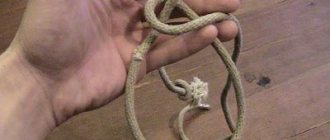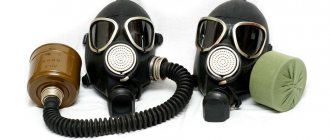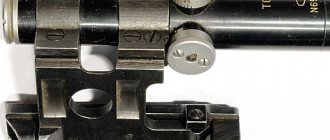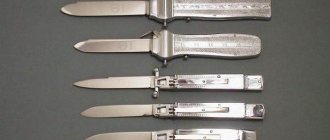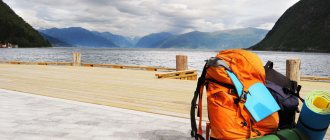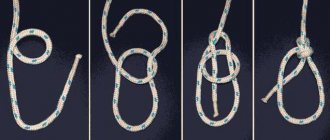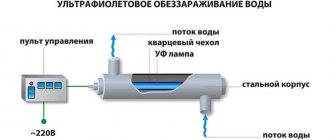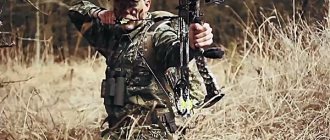Ropes, ropes, cords - we come across these concepts every day, many replace them with each other, implying that there is no difference between them. In our article we will figure out whether this is really so, and how the cable relates to the listed products, and we will also analyze their types and applications. First, let's give some definitions.
Rope is a twisted or twisted product made from synthetic or natural materials, it is flexible and has a small diameter. The concepts of climbing rope and clothesline are used.
A rope is also a twisted product, only thicker, for the manufacture of which not only synthetics or plant materials are used, but also steel wire.
Cord refers to thin ropes, as well as electrical wires with a conductive core, enclosed in a PVC sheath.
Now we read the definition of a cable. Professional literature says that this is a twisted or twisted product, for the manufacture of which synthetic, vegetable or steel strands of different diameter sizes are used. That is, it becomes clear that a cable is a generalized concept of rope, rope and cord.
Types and characteristics of ropes
In order to buy a rope, you need to decide on the material from which it is made, and also choose the diameter of the rope. It is important to decide for what purpose you will use it.
According to the material they are distinguished:
- Natural.
- Synthetic.
- Combined.
Each type differs in cost and characteristics.
Natural
They are made from plant, less often animal, material. Linen, hemp, cotton are used in production, and jute ropes are popular. Features of all natural products:
- Long story. They have been used for thousands of years, when nothing was known about metal and synthetics.
- Expensive. This is the most expensive type and requires a lot of labor to produce.
- Tendency to rot. Popular linen or hemp ropes absorb moisture well and begin to rot after time. They fight this using special impregnations.
From animal origin we note objects made of wool or silk; they have a minimal diameter but high strength.
Synthetic
They are made from artificial fibers that are obtained as a result of chemical synthesis. Polyamide, polypropylene, and polyethylene types are common. The main advantages are low cost, high production speed, increased strength. A striking example is nylon rope, which is used everywhere.
Combined
According to their characteristics, they are somewhere between natural and artificial, since both fibers are present in the composition. They are thicker than artificial ones due to the inclusion of plant strands in the composition. In terms of price and labor intensity, they also occupy an intermediate position between the two types.
Design
There are braided and twisted ropes. In the first case, three strands are used, which are first twisted relative to each other in one direction, and then all together in the opposite direction. Rigidity depends on the number of twists. Natural products are most often made using this technology.
Weaving technology is more complex; its use requires sophisticated equipment, ten or more strands are used, and in some cases cores are installed. The use of cores makes the rope more rigid; when stretched, it does not lose its properties.
Sports dynamic and static ropes - how to choose?
January 21, 2021
In this article we will look at various ropes - both dynamic (single, double and double ropes for rock climbing and mountaineering) and static (for caving and canyoning). We will tell you about their main characteristics and compare different models.
Let's start with the special marks that you can find on the packaging of a new rope. These are the technologies Petzl uses to make the rope as durable, comfortable and safe as possible.
Impregnation UIAA Guide DRY
This is the most serious water-repellent treatment for frequent use of ropes in wet environments. This impregnation is especially important when using ropes in technical mountaineering and ice climbing. The treatment also improves the rope's resistance to dirt and abrasion.
The UIAA Guide treatment meets the requirements of the UIAA water repellency test. The results of this test show a water absorption of less than 2%. The processing process itself consists of two stages: the core is processed before weaving the rope, and then the entire rope is processed. Double impregnation provides maximum resistance to moisture.
Impregnation Duratec Dry
A standard impregnation that makes the rope more resistant to water, dirt and abrasion. Flexibility, ease of rope handling and other characteristics last longer in cold and wet conditions.
Ever Flex Treatment
Special heat treatment maintains the tightness of the rope throughout use and prevents the sheath from shifting.
Ultra Sonic Finish
The braid and core are soldered into a single unit at the ends, the rope does not fray and there is no need to burn the ends.
Coil Climb Ready
The coil is laid so that the rope is ready for use immediately after unpacking. This helps avoid mistakes and confusion the first time you use it.
Middle Mark
Marking the middle of the bay will help in the work, especially when belaying the leader.
What are the types of dynamic ropes?
Single ropes
One rope is used for belaying. Typically used in single pitch climbing or simple alpine routes. Some athletes also use single ropes for multipitches.
Double and double ropes
Double ropes: ropes are used in pairs and are snapped into the belay points one at a time. This use reduces the friction of the ropes on the guys and also provides safety in case one of the ropes is damaged (for example, by a sharp stone).
Double ropes: Used in pairs, with both ropes always used. Recommended for use when descending.
Multifunctional ropes
Such ropes can be used as single, double or double ropes.
Comparison table of Petzl single dynamic ropes (current models 2021)
Comparison chart of double and double ropes
Static ropes
According to the CE EN 1891 standard, static ropes are divided into two types - type A and type B. They differ primarily in strength. For type A, the minimum strength is 22 kN, for type B - 18 kN.
In addition, static ropes differ primarily in diameter. The smaller the diameter, the less weight, such a rope is easier to carry and takes up less space. However, keep in mind that larger diameter ropes are easier and safer to work with, so they are better suited to less experienced users. Also, we must not forget that different purposes require coils of different lengths.
Petzl Static Rope Comparison Chart
Types of ropes
As we found out, the diameter of the rope is larger than the rope. In this regard, the rope can withstand a greater load. Another difference is that in production, in addition to plant and synthetic materials, metal is used; the load on ropes of this type can be higher than on other types. The steel product has six strands with a core inside. Strands consist of different amounts of wire - a manufactured rope according to GOST can have 7, 12, 24 pieces, but these are not final values, their number may vary.
Among vegetable ropes, the most popular are jute and hemp ropes. The former have lower strength compared to hemp ropes, but maximum wear resistance. Among synthetic ones, polyamide and Kevlar ropes are widely used. Polyamide ones are characterized by increased strength; this figure even exceeds the corresponding values for steel cable. Synthetic products do not rot, are lightweight, and elastic - in some cases, the length of the rope under load can increase by 30%.
The main characteristics that you need to pay attention to when choosing ropes and ropes:
- Type and method of laying.
- Core material (if present).
- Direction of lay and degree of curl.
- Material of manufacture.
These characteristics of ropes affect strength, weight, flexibility, elasticity, and other properties that are important in work.
Let's return again to the types of ropes and ropes and talk about their distinctive characteristics, properties and features.
- Hemp and linen ropes. They are quite common in everyday life and are cheap. This price for hemp and flax ropes is due to the fact that hemp fiber is produced from hemp stems. They have the following advantages: - have a high coefficient of friction; — resistant to thermal and solar radiation; - have low electrification; - environmentally friendly. They have the following disadvantages: - have high hygroscopicity; - prone to rotting; — I have a reduced breaking load when wet;
- Cotton ropes. Made from cotton fiber. This fiber is often used to make fabrics, non-wovens and spun (woven) products. They have the following advantages: - have good mechanical properties; — thermostable; - have moderate hygroscopicity; - durable; - have good dielectric properties. They have the following disadvantages: - have low abrasion resistance; - are expensive, often due to the lack of domestic raw materials;
- High density polypropylene cord. Produced for use in construction, shipping, lifting and installation work, transportation of goods and simply in everyday life. This cord is equipped with a high ability to withstand shock loads, it is durable and wear-resistant. Consists of 24 strands and is sold in a reel of 100 meters. It has the following distinctive characteristics: - has increased resistance to bending; — does not sink (positive buoyancy); — has high resistance to abrasion; — produced in Russia;
- Twisted jute rope. Jute is one of the most popular materials for making ropes. It is made from the mossy fibers of tall shrubs. This plant grows in India and is related to the linden tree. After the stems of the plant are cut, they are placed in water to soften them. After this, the bast is peeled off, washed and dried. This is how raw materials are transformed into a finished product. The strength of jute is less than that of hemp and abaca fibers (Manila rope). Jute has the following characteristics: - resistant to solar and thermal radiation; - environmentally friendly; — does not accumulate static electricity. Jute is actively used in construction and industry. This material is also often used in the decorative design of premises;
- The nylon cord is dense with weaving. Designed for the following areas: — amateur and industrial fishing; — installation of tents; — production of sports equipment; - package; — lifting mechanism and operation of fishing trawls; — economic and auxiliary needs; — decorative finishing; - standing rigging; - auxiliary ropes in mountaineering.
Now that you are familiar with the basic types of ropes and ropes, you need a reliable store with quality products. At Global Tex you will find such products as polyamide PA nylon 24-strand rope (cord) , which is manufactured in accordance with GOST standards. High resistance to friction, wear and heat - all these are properties of polyamide rope. Many construction and fishing professionals have long appreciated the benefits of this rope, and you will too!
To buy polyamide rope, call: 8 and email: [email protected] globalteks. ru .
Cords
The main features of the cords are their small diameter and resistance to breaking loads. They can be intended for knitting and made from materials of normal strength; in order to withstand high tensile loads, synthetics are used. A prominent representative of artificial products is nylon cord, another name is polyamide. Their advantages:
- High strength. The product with a diameter of only 0.1 mm can withstand a load of more than half a kilogram.
- Light weight. Compared to natural products, nylon laces are almost “airy,” which is important during operation and carrying.
- Resistance to external influences. The material is resistant to wear, shock, mechanical stress, and will not deteriorate when exposed to acids or other aggressive liquids. Actively used as rescue ropes.
- Heat resistance. The material does not lose its properties at temperatures up to 60°C.
Manufacturing technology: weaving and twisting. Depending on the method, the diameter of the products also changes. Twisted ones have a thickness from 1 to 6 mm, and wicker ones from 6 to 16 mm. Protective weaving can be used in the cords, this increases their service life.
Each of the listed types has found wide application: everyday life, production, construction, sports - this is just a small list. For example, sling ropes are used to move heavy loads; maritime activities cannot be imagined without ropes; not a single mountaineering competition or circus performance is complete without safety ropes. Plant ropes are often used when decorating rooms. In general, it is easier to list the areas where ropes are not used.
So, you have learned about the differences between ropes, cords, ropes and you know about the types, manufacturing technologies and materials that are used for their production. This will help you make the right choice.
Types of dynamic ropes
Depending on the purpose of use, there are three types of ropes: Single - a regular rope that can be used for belaying. Such a rope is marked with the number 1 in a circle. Single rope diameter from 8.7 mm. Double (half) - a rope with a diameter of 7.5 mm, which is used in pairs with another similar rope, and they are alternately fastened to different intermediate belay points. Such ropes are marked with the 1/2 symbol. Twin - the rope also has a diameter of 7.5 mm. The use of double ropes implies their use as one, i.e. both ropes are fastened together at all intermediate belay points. Such ropes are marked with a symbol consisting of two intersecting rings. It should be noted that the vast majority of ropes with a diameter of 7.5–8.5 mm will satisfy both the double and twin standards. It is unacceptable to use half and twin ropes as single ropes.
Different types of ropes and ropes
The online store "Shnur-service" offers ropes and cords of different types. They are presented in a wide range. On the website https://alto2005.ru/ you can find out in detail about each name. The products are of high quality. It meets the standards. The catalog contains several main categories. They have hundreds of products at competitive prices.
Ropes and ropes are in demand products. They are used for many purposes. For example, in construction or mountaineering. They are necessary for creating sports equipment, equipment and exercise equipment. Ropes are used to make winches and other lifting mechanisms. Ropes are needed for many household and industrial purposes. They are used on the farm, in production and at various facilities.
Online store assortment
- Slings.
- Galvanized chain.
- Safety harnesses.
- Various types of rigging.
- Motorist kits.
- Various types of ropes.
- Ropes of various types.
- Steel slings ropes.
- Equipment for mountaineering.
- Assorted tensioning belts.
- Perforated fasteners.
- Textile tapes of different types.
- Assorted towing rope.
- Polypropylene bags of different types.
- Assorted polypropylene twine.
Each item is provided with a detailed description. The consumer has the opportunity to learn about the merits of the product and its advantages over analogues. And also about features, qualities, characteristics. Prices are listed in the description. Photographic images allow you to clearly evaluate the quality and appearance of the product.
On the site it is easy to search for the desired product options through the search bar, using the names of sections and subsections. Site filters allow you to select products based on various criteria. For example, by cost, type of product, its qualities and characteristics. Selection by filters helps you quickly find the right solutions and compare them with each other. And based on this, choose the best options for ordering.
Advantages of services and offers
The store's website allows you to place orders online through a shopping cart. And it provides excellent opportunities for analyzing prices and products. As well as their quick search, comparison and selection. Shopping in an online store has many advantages. These include the following:
- product quality guarantees;
- favorable prices, special offers;
- high quality services;
- possibility of payment in various ways;
- delivery throughout the Russian Federation in a short time;
- a wide range of different types of ropes and other products;
- free delivery within the Moscow region, etc.
The company has been steadily operating in the market for sales and supplies of rope products for more than ten years. It has a flexible pricing strategy, on the basis of which prices that are favorable to consumers are formed. Warehouse sites and an office are located in one place, which facilitates work with clients and makes it convenient for customers.
The company has representative offices in many major cities of the Russian Federation. In addition to Moscow and St. Petersburg, they are available in Arkhangelsk and Astrakhan, Belgorod and Bryansk, Vladivostok and Vladikavkaz. And also in Vladimir and Volgograd, Yekaterinburg and Kazan. A complete list of representative offices can be found on the company’s website.
Who is the product intended for?
Rope and rope products are in demand by small wholesale and retail trade enterprises. As well as companies that engage in rigging and lifting work. And not only.


